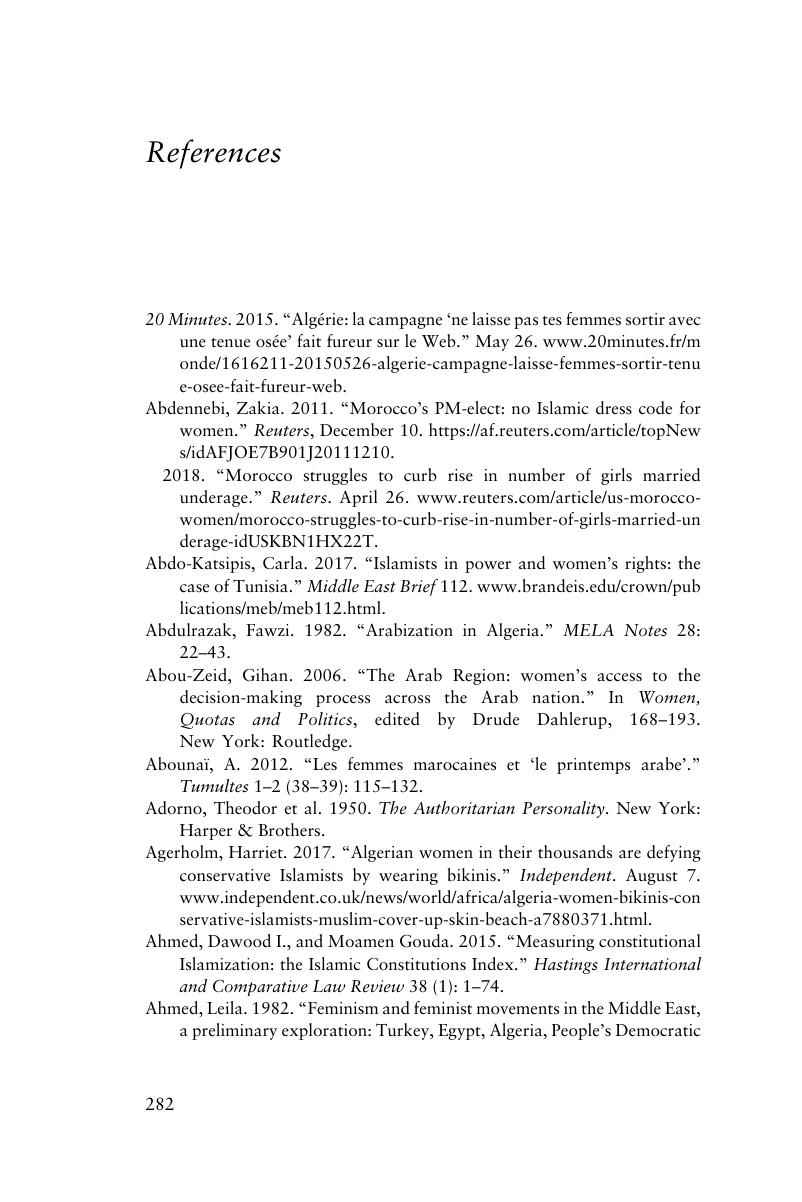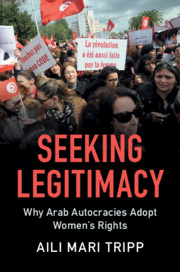References
Published online by Cambridge University Press: 05 August 2019
Summary

- Type
- Chapter
- Information
- Seeking LegitimacyWhy Arab Autocracies Adopt Women's Rights, pp. 282 - 306Publisher: Cambridge University PressPrint publication year: 2019

